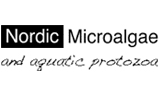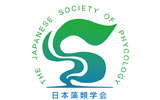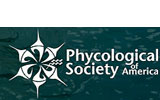Polysiphonia foetidissima Cocks ex Bornet 1892
Publication Details
Polysiphonia foetidissima Cocks ex Bornet 1892: 314
Published in: Bornet, E. (1892). Les algues de P.-K.-A. Schousboe. Mémoires de la Société des Sciences Naturelles et Mathématiques de Cherbourg 28: 165-376, pls I-III.
Type Species
The type species (holotype) of the genus Polysiphonia is Polysiphonia urceolata (Lightfoot ex Dillwyn) Greville.
Status of Name
This name is currently regarded as a synonym of Vertebrata foetidissima (Cocks ex Bornet) Díaz-Tapia & Maggs.
Source of Synonymy
Díaz-Tapia, P., McIvor, L., Freshwater, D.W., Verbruggen, H., Wynne, M.J. & Maggs, C.A. (2017). The genera Melanothamnus Bornet & Falkenberg and Vertebrata S.F. Gray constitute well-defined clades of the red algal tribe Polysiphonieae (Rhodomelaceae, Ceramiales). European Journal of Phycology 52(1): 1-20, 77 figs.
Type Information
Lectotype locality: Plymouth, Cornwall, England; (Maggs & Hommersand 1993: 336) Lectotype: Cocks; undated (?1855); PC; ‘Algarum Fasciculi’, no. 29. Probable Syntypes distributed as this exsiccatum (Maggs & Hommersand 1993: 337) Notes: Lectotype: PC 0146017; Mount Edgcumbe, Plymouth, Cornwall (Diaz-Tapia et al., 2013).
Origin of Species Name
Adjective (Latin), very foul-smelling.
General Environment
This is a marine species.
Created: 02 August 1996 by M.D. Guiry.
Last updated: 16 November 2023
Verification of Data
Users are responsible for verifying the accuracy of information before use, as noted on the website Content page.
Nomenclatural note
Name introduced in Gatty (1863: 164) who says "Specimens under this name having been distributed in Dr. Cocks%u2019 Algarum Fasciculi, it is necessary to mention that Dr. Harvey does not consider it specifically distinct from P. fibrata (fig. 113). It is rather purpler in hue; but whether this arises from anything more than its growing on mud in a harbour, where the water cannot be so pure as on a more open sea, seems doubtful. Its professed habitats are the landing-places on the shore of Mount Edgcumbe, and Torpoint." This does not constitute valid publication of the name as Mrs Gatty merely Harvey's doubts. - (14 July 2017) - M.D. Guiry
Taxonomic note
Bornet clearly distinguishes P. foetidissima from P. stuposa on the basis of the number of siphons in Cocks's material: "M. Hauck considère le P. foetidissima comme synonyme du P. stuposa Zanard. La réunion paraît plausible, cependant M. Kützing dit que sa plante a de 6 à 8 siphons, tandis que dans l'échantillon de Cocks, dans tous ceux que nous avons récoltés en diverses localités, dans ceux que je tiens de M. Hauck luimême, ce nombre varie de 8 à 10, mais ne descend pas audessous de 8." Suárez, Martínez-Daranas & Alfonso (2014: 81) further comment "se sigue el criterio de Díaz et al. (2009) y, por este motivo, se considera que P. foetidissima es diferente a P. stuposa Zanardini ex Kützing, 1864, y que su distribución está restringida al Mediterráneo." - (01 April 2013) - M.D. Guiry
Distributional note
Only one verified record from British Isles (Plymouth, Cornwall; see Maggs & Hommersand 1993, p. 337). - (11 May 2006) - G.M. Guiry
Habitat note
moderately to extremely wave-exposed sites, usually on sand-covered rocks from middle to lower intertidal; sometimes grows over Rhodothamniella floridula, Polysiphonia nigra, Ophidocldus simpliciusculus, Pterosiphonis pennata (Diaz-Tapia & Bárbara 2013). - (24 January 2014) - G.M. Guiry
Linking to this page: https://www.algaebase.org/search/species/detail/?species_id=727
Citing AlgaeBase
Cite this record as:
M.D. Guiry in Guiry, M.D. & Guiry, G.M. 16 November 2023. AlgaeBase. World-wide electronic publication, National University of Ireland, Galway. https://www.algaebase.org; searched on 31 March 2025
 Request PDF
Request PDF














